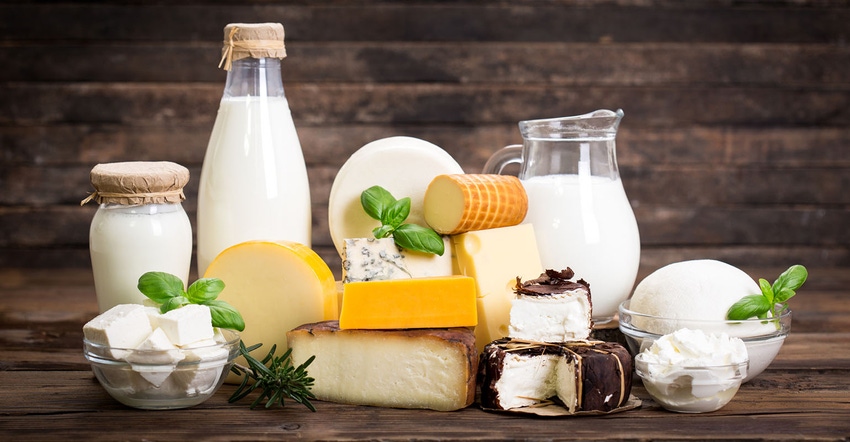
Class III milk futures have been able to find strength since early January following the USDA announcement that there would be a fifth round of government purchasing for the Farmers-to-Families Food Box program. The government set aside $1.5 billion for this round of purchasing.
Earlier this week, the February Class III milk futures contract was able to climb above $20.00, reaching a price high of $20.08.
Cheese is the beneficiary
Cheese buyers came flocking to the market again after the fifth round of food box program was announced. Since the announcement, block cheese rallied an impressive 34.50c over five sessions. Recent data shows that United States cheddar cheese production through November averaged a 2.96% year-over-year growth rate from 2019. Thanks to the Farm-to-Family program, demand for cheese continues to be strong.
United States dairy exports
Thanks to a lower U.S. dollar, U.S. dairy exports in 2020 through November were up over 11% more than exports in 2019 through the same month. However, fresh data has emerged that shows for the specific month of November, that U.S. dairy exports actually declined 5% in value, which was the first year-over-year decline for 2020.
Export demand and cheese demand for the food box program has been instrumental for the solid gains for Class III milk futures during 2020, and now early 2021. While the market has seen impressive gains the volatility also brought impressive price valleys lower as well. Anytime the Farm-to-Family program came to a pause, class III milk futures would sink lower into the $15.00 price level. Without that demand, the reality of mega milk production sits front and center stage.
Enormous U.S. milk production
United States milk production in November totaled 18.025 billion pounds, which was up 3% from the same month last year. This was the largest increase year-over-year since 2014! Production per cow averaged 1,916 pounds, which was up 43 pounds from the November 2019 amount per cow. Total milk cows on farms in the U.S. were 9,407,000 head. This is 62,000 head more than the same month last year.
Every major producing U.S. state saw milk production growth: California (+2.60%), Wisconsin (+2.70%), Michigan (+3.60%), Iowa (+2.30%), Illinois (+5.80%), Minnesota (+3.90%), Pennsylvania (+0.90%). This increase in production has been due to high milk prices, high quality feed last summer and at harvest, and fewer cows being culled. For 2020 a total of 3,037,100 head were slaughtered. This compares to 3,209,100 head slaughtered a year earlier.
Overall, the trend remains up, thanks to the government’s fifth round of dairy purchases for the Farmers- to-Families Food Box program. The next milk production report is January 25, and the next Cold Storage report is also on the 25.
Without demand from the Food Box program, Class III milk futures are at risk of a price correction.
Reach Naomi Blohm: 800-334-9779 Twitter: @naomiblohm and [email protected]
Disclaimer: The data contained herein is believed to be drawn from reliable sources but cannot be guaranteed. Individuals acting on this information are responsible for their own actions. Commodity trading may not be suitable for all recipients of this report. Futures and options trading involve significant risk of loss and may not be suitable for everyone. Therefore, carefully consider whether such trading is suitable for you in light of your financial condition. No representation is being made that scenario planning, strategy or discipline will guarantee success or profits. Any decisions you may make to buy, sell or hold a futures or options position on such research are entirely your own and not in any way deemed to be endorsed by or attributed to Total Farm Marketing. Total Farm Marketing and TFM refer to Stewart-Peterson Group Inc., Stewart-Peterson Inc., and SP Risk Services LLC. Stewart-Peterson Group Inc. is registered with the Commodity Futures Trading Commission (CFTC) as an introducing broker and is a member of National Futures Association. SP Risk Services, LLC is an insurance agency and an equal opportunity provider. Stewart-Peterson Inc. is a publishing company. A customer may have relationships with all three companies. SP Risk Services LLC and Stewart-Peterson Inc. are wholly owned by Stewart-Peterson Group Inc. unless otherwise noted, services referenced are services of Stewart-Peterson Group Inc. Presented for solicitation
The opinions of the author are not necessarily those of Farm Futures or Farm Progress.
About the Author(s)
You May Also Like






